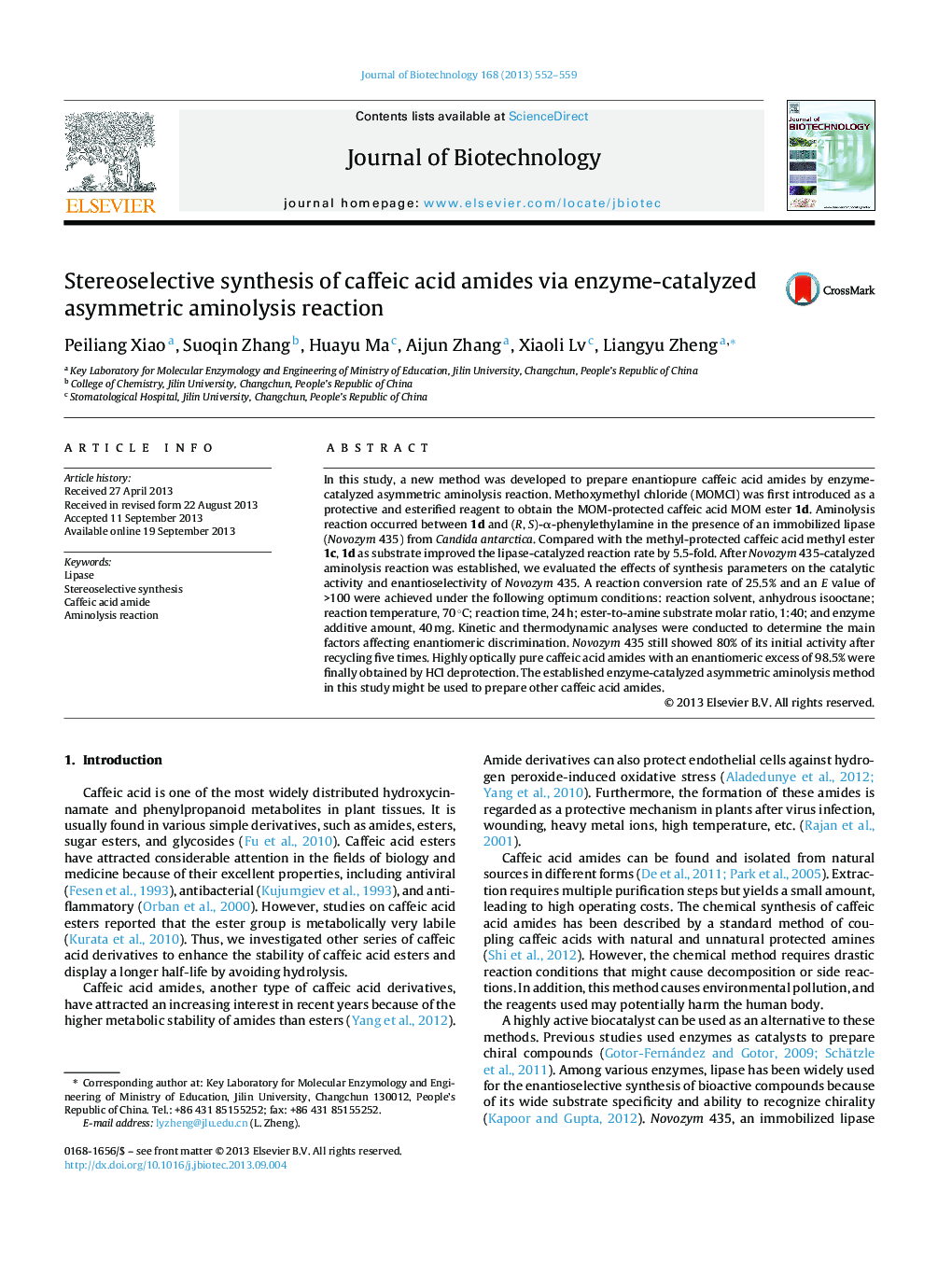| Article ID | Journal | Published Year | Pages | File Type |
|---|---|---|---|---|
| 6491715 | Journal of Biotechnology | 2013 | 8 Pages |
Abstract
In this study, a new method was developed to prepare enantiopure caffeic acid amides by enzyme-catalyzed asymmetric aminolysis reaction. Methoxymethyl chloride (MOMCl) was first introduced as a protective and esterified reagent to obtain the MOM-protected caffeic acid MOM ester 1d. Aminolysis reaction occurred between 1d and (R, S)-α-phenylethylamine in the presence of an immobilized lipase (Novozym 435) from Candida antarctica. Compared with the methyl-protected caffeic acid methyl ester 1c, 1d as substrate improved the lipase-catalyzed reaction rate by 5.5-fold. After Novozym 435-catalyzed aminolysis reaction was established, we evaluated the effects of synthesis parameters on the catalytic activity and enantioselectivity of Novozym 435. A reaction conversion rate of 25.5% and an E value of >100 were achieved under the following optimum conditions: reaction solvent, anhydrous isooctane; reaction temperature, 70 °C; reaction time, 24 h; ester-to-amine substrate molar ratio, 1:40; and enzyme additive amount, 40 mg. Kinetic and thermodynamic analyses were conducted to determine the main factors affecting enantiomeric discrimination. Novozym 435 still showed 80% of its initial activity after recycling five times. Highly optically pure caffeic acid amides with an enantiomeric excess of 98.5% were finally obtained by HCl deprotection. The established enzyme-catalyzed asymmetric aminolysis method in this study might be used to prepare other caffeic acid amides.
Keywords
Related Topics
Physical Sciences and Engineering
Chemical Engineering
Bioengineering
Authors
Peiliang Xiao, Suoqin Zhang, Huayu Ma, Aijun Zhang, Xiaoli Lv, Liangyu Zheng,
